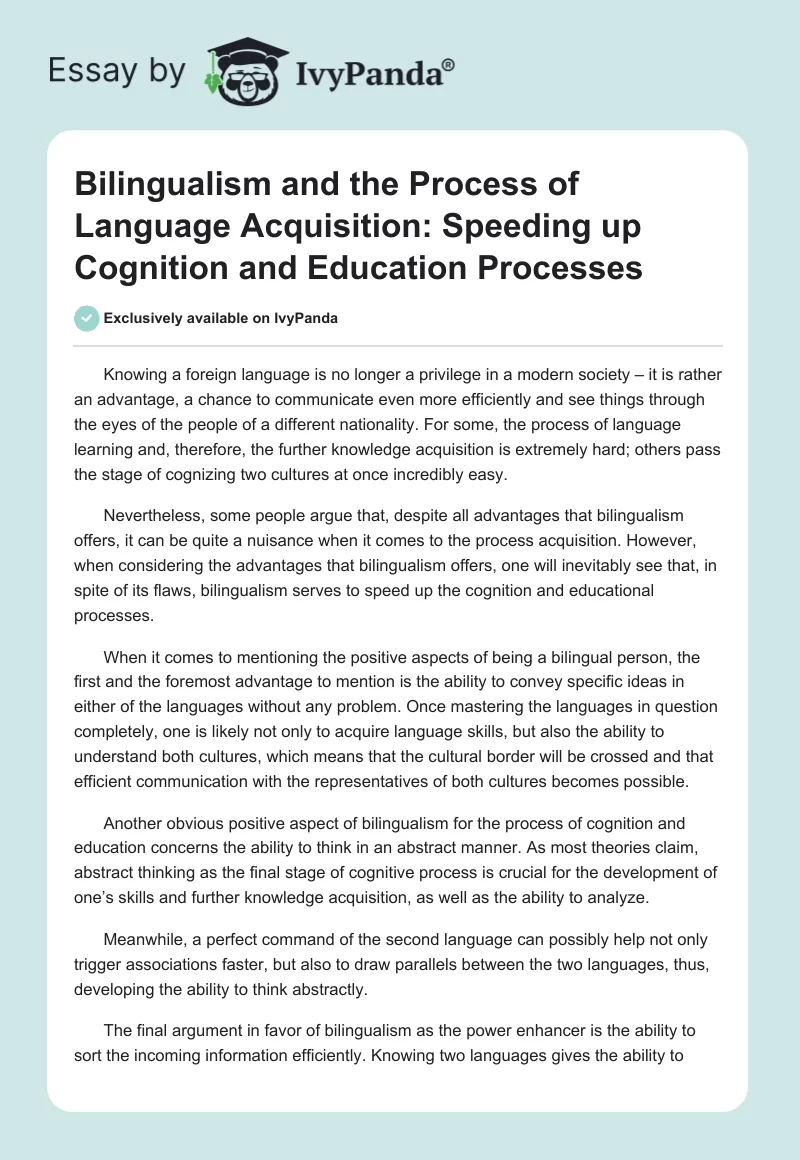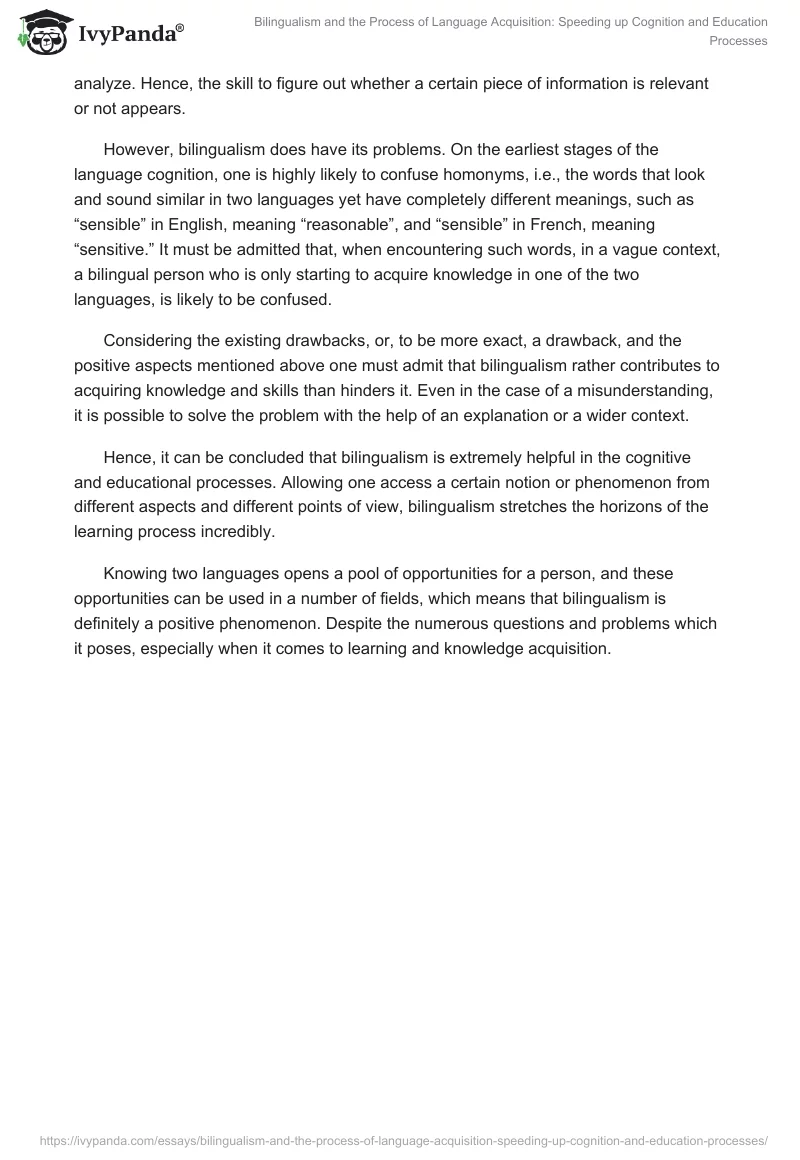Knowing a foreign language is no longer a privilege in a modern society – it is rather an advantage, a chance to communicate even more efficiently and see things through the eyes of the people of a different nationality. For some, the process of language learning and, therefore, the further knowledge acquisition is extremely hard; others pass the stage of cognizing two cultures at once incredibly easy.
Nevertheless, some people argue that, despite all advantages that bilingualism offers, it can be quite a nuisance when it comes to the process acquisition. However, when considering the advantages that bilingualism offers, one will inevitably see that, in spite of its flaws, bilingualism serves to speed up the cognition and educational processes.
When it comes to mentioning the positive aspects of being a bilingual person, the first and the foremost advantage to mention is the ability to convey specific ideas in either of the languages without any problem. Once mastering the languages in question completely, one is likely not only to acquire language skills, but also the ability to understand both cultures, which means that the cultural border will be crossed and that efficient communication with the representatives of both cultures becomes possible.
Another obvious positive aspect of bilingualism for the process of cognition and education concerns the ability to think in an abstract manner. As most theories claim, abstract thinking as the final stage of cognitive process is crucial for the development of one’s skills and further knowledge acquisition, as well as the ability to analyze.
Meanwhile, a perfect command of the second language can possibly help not only trigger associations faster, but also to draw parallels between the two languages, thus, developing the ability to think abstractly.
The final argument in favor of bilingualism as the power enhancer is the ability to sort the incoming information efficiently. Knowing two languages gives the ability to analyze. Hence, the skill to figure out whether a certain piece of information is relevant or not appears.
However, bilingualism does have its problems. On the earliest stages of the language cognition, one is highly likely to confuse homonyms, i.e., the words that look and sound similar in two languages yet have completely different meanings, such as “sensible” in English, meaning “reasonable”, and “sensible” in French, meaning “sensitive.” It must be admitted that, when encountering such words, in a vague context, a bilingual person who is only starting to acquire knowledge in one of the two languages, is likely to be confused.
Considering the existing drawbacks, or, to be more exact, a drawback, and the positive aspects mentioned above one must admit that bilingualism rather contributes to acquiring knowledge and skills than hinders it. Even in the case of a misunderstanding, it is possible to solve the problem with the help of an explanation or a wider context.
Hence, it can be concluded that bilingualism is extremely helpful in the cognitive and educational processes. Allowing one access a certain notion or phenomenon from different aspects and different points of view, bilingualism stretches the horizons of the learning process incredibly.
Knowing two languages opens a pool of opportunities for a person, and these opportunities can be used in a number of fields, which means that bilingualism is definitely a positive phenomenon. Despite the numerous questions and problems which it poses, especially when it comes to learning and knowledge acquisition.


